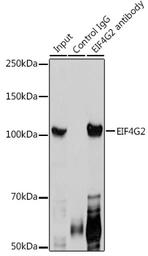DAP5 antibody
Cat. No. GTX33144
Cat. No. GTX33144
-
HostRabbit
-
ClonalityPolyclonal
-
IsotypeIgG
-
ApplicationsWB ICC/IF IHC-P IP
-
ReactivityHuman, Mouse, Rat





